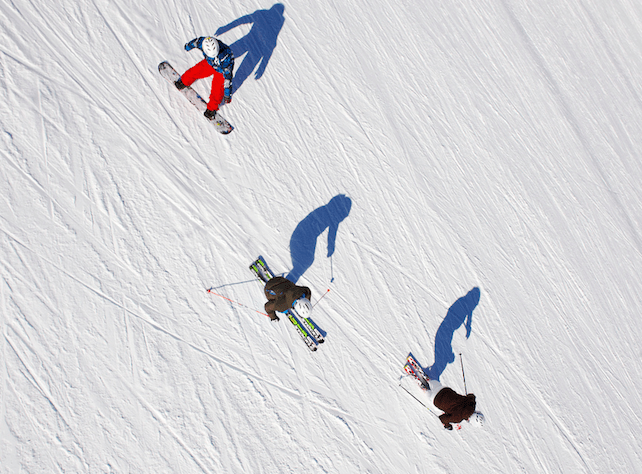
Joanna Yellowlees-Bound is Chief Executive of ski holiday specialists Erna Low and has led the company for 20 years. Given that Erna Low goes to 108 destinations in the Alps and the Rockies, it’s not surprising she knows a thing of two about ski resorts.
It’s one of those chair-lift conversations that goes on forever. What are the world’s longest ski runs? Do you measure them by mileage (or kilometre-age), or by vertical drop? Do you include off-piste descents as well as pistes? And does it matter if you have to catch a lift to join all the bits of a descent together?
Here’s my contribution to the debate: and to stop it turning into an argument, I’ve laid out the following parameters. The run must be unbroken by a lift or hike. It must be marked on the piste map as either a piste or an itinerary run (but it doesn’t have to be the same name all the way down). It must end by a lift that is part of a network that will eventually bring you back up to the point from where you started.
And, crucially, I’m measuring length in terms of vertical drop.
Here are the results. If you think I’ve missed something important, let me know in the comments box below. Erna Low herself, who founded our company 80 years ago, would be the first to complain – surely one of the top ten must be in her native Austria? Sadly, not. But the fact that we now offer hotel or apartment holidays in all these resorts would at least have brought a smile to her face.
1. Alpe d’Huez – top of Pic Blanc to l’Enversin d’Oz
Vertical drop: 2230m
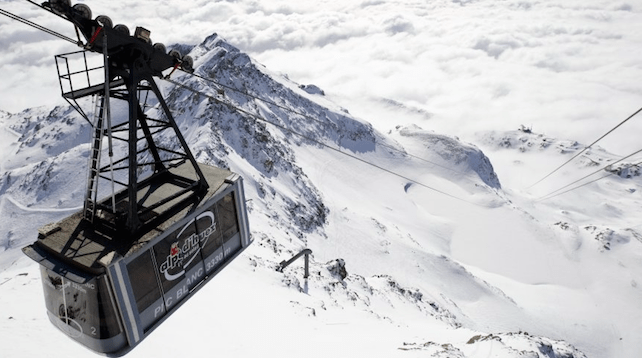
Way to go: as you ride the cable-car above Alpe d’Huez to the top of Pic Blanc you look down at the Tunnel piste below and think to yourself: “There’s no way I can go down there!” But you can. Given soft snow conditions, its bark is worse than its bite – just don’t try it when it’s iced up. After some tiring steep moguls you push through a tunnel and emerge onto an even steeper face. But once you have negotiated this, the worst is over. However, it’s a mind- and body-bogglingly long way down the red Les Rousses and black La Fare to the hamlet of L’Enversin d’Oz.
Stay: Le Cristal de l’Alpe is 50m from the nearest lift and has an indoor heated swimming-pool.
2. Zermatt – Klein Matterhorn to the resort
Vertical drop: 2200m
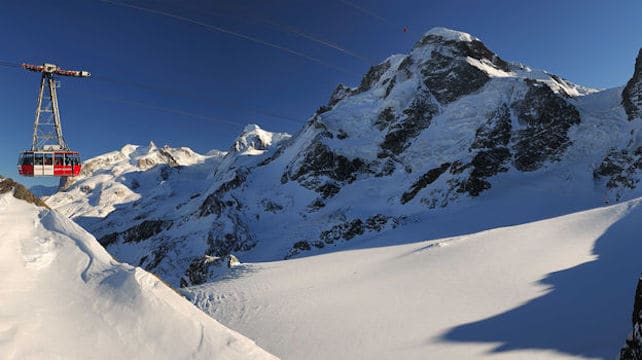
Way to go: the journey to the top of the Klein Matterhorn – and the cable-car station precariously clinging to the summit – gets the butterflies going. At 3883m the heart races and you wonder if you have bitten off more than you can chew. But the run down – at least the first part on the glacier – is as benign as they come. At times you need to schuss just to keep up enough speed. After Trockener Steg at 2939m it gets just a bit more demanding – especially if the cover’s icy – but basically it’s a cruise all the way to Zermatt.
Stay: Park Hotel Beau-Site has great views and is five minutes’ walk from the Sunnegga Express lift.
3. Davos/Klosters – Weifluhjoch to Kublis
Vertical drop: 2034m
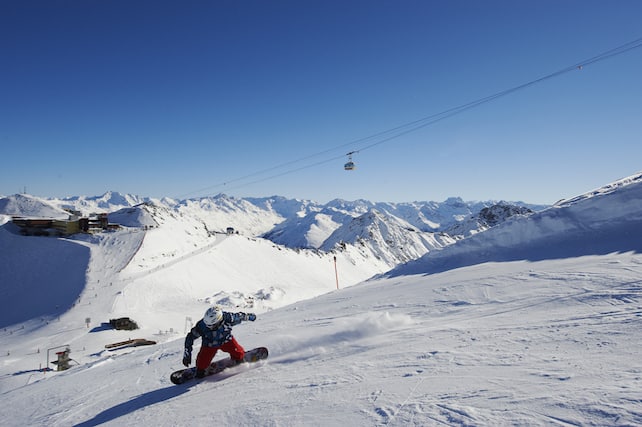
Way to go: from Davos Dorf, take the funicular up to the Weissfluhjoch and then the short cable-car to the Weissfluhgipfel. The descent, behind the Scharzhorn and on down to Schifer, holds no technical problems. Then it’s a long run down through the woods and across undulating pastures all the way to the hamlet of Kublis. If you’ve got it right you ski straight to the station and hop on the train. If you’ve got the timing wrong…well, a cup of coffee or a hot toddy in the pub is more than welcome.
Stay: Hotel Seehof Davos has been welcoming guests for over a hundred years and is right next to the Parsenn funicular.
4. Les Arcs – Aiguille Rouge to Le Pre
Vertical drop: 2026m
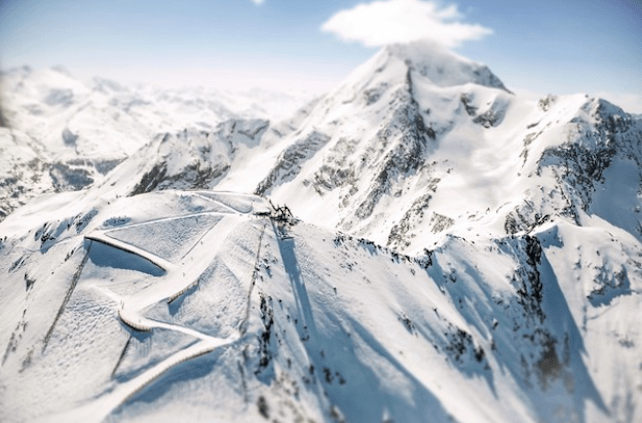
Way to go: this is tough; strictly for strong skiers. From Arc 1950 take the Varet chair and then the cable-car to the 3226m summit of Aiguille Rouge. The long black run of the same name has a few distinctly tricky sections as it winds down just outside the Vanoise National Park. Once you reach the treeline it all becomes a bit easier. Finally you reach the charming hamlet of Le Pre. The way back up is via three chair-lifts to Arc 2000.
Stay: Le Village Arc 1950 is a ski-in ski-out pedestrianised village made up of eight Savoie-style buildings.
5. Argentiere – Les Grands Montets to the resort
Vertical drop: 2023m
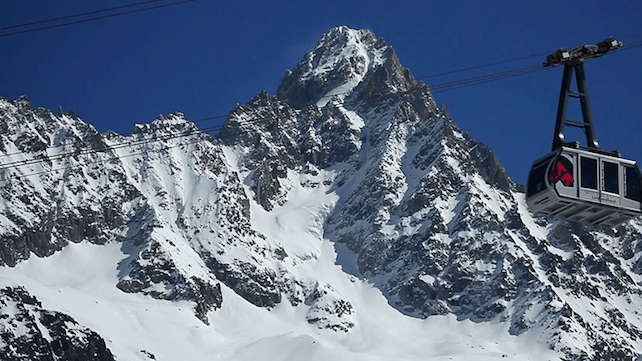
Way to go: from the car park at the bottom of the ski area you take the lift up to Lognan at 1972m and then the Grands Montets lift all the way up to 3275m. From the foot of the steel staircase there’s a choice of routes across the Glacier des Rognans. This is wild, crevassed terrain and great care should be taken. The Pointe de Vue sweeps wide to skier’s right, while Pylones follows the line of the lift, as the name indicates. There are further variations on the way down, but all routes converge on the final pitch down through the woods to Argentiere.
Stay: Hotel Les Aiglons is a contemporary hotel located at the foot of the Aiguille du Midi cable-car.
6. Malga Ciapela – top of Marmolada to the town
Vertical drop: 1823m
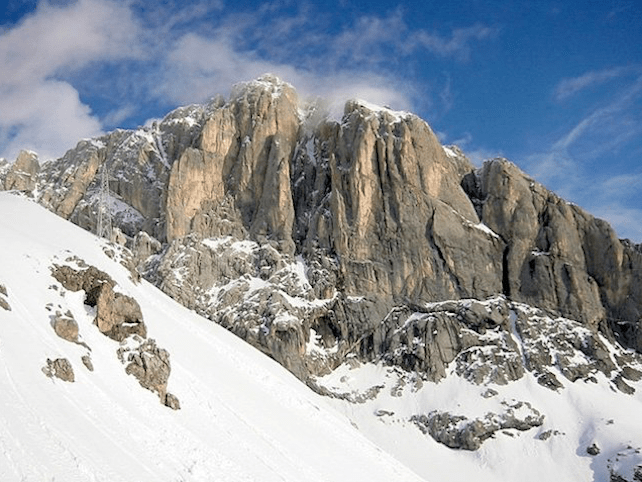
Way to go: we don’t have accommodation in the small town of Malga Ciapela at the foot of the 3342m Marmolada in the heart of the Dolomites, but you can stay in Arabba and ski there from your hotel via Passo Padon. A cable-car takes you up from the town in three stages to Punta Rocca at 3269m. The descent presents no difficulty – it’s a long easy cruise with spectacular scenery all the way down to the bottom of the lift where you started. The route follows a World War I trail and is clearly signposted.
Stay: Hotel Evaldo is family-run and has a Roman-style spa centre and a gourmet restaurant.
7. Cervinia – Plateau Rosa to the resort
Vertical drop: 1833m
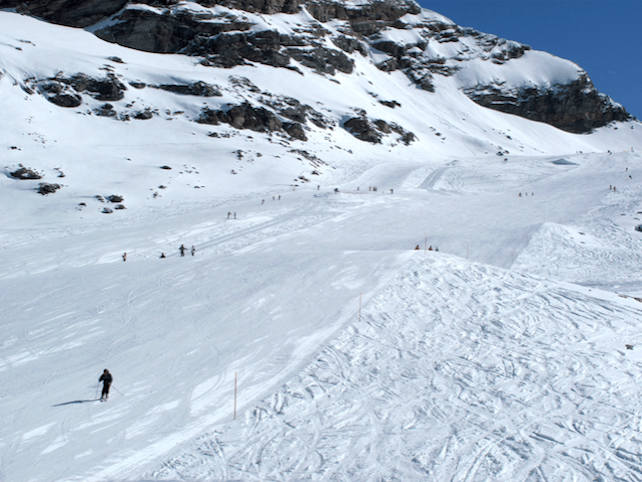
Way to go: you don’t have to be an expert to ski Cervinia’s best-known run. Anyone who can link their parallel turns should be able to manage the combination of blue and easy red pistes that drops down from the Italian-Swiss border to Cervinia, amidst some truly gob-smacking scenery. Just remember to give yourself a break now and again. The sheer length of the descent turns even the strongest legs to spaghetti. Initially I thought the longest run was down to Valtournenche, which would have given it an extra 526m, but it’s necessary to take a short 150m lift half way down.
Stay: Saint Hubertus Resort is eco-friendly with wooden beams, huge stone fireplaces, and designer furniture.
8. Bormio – from the glacier to the village
Vertical drop: 1787m
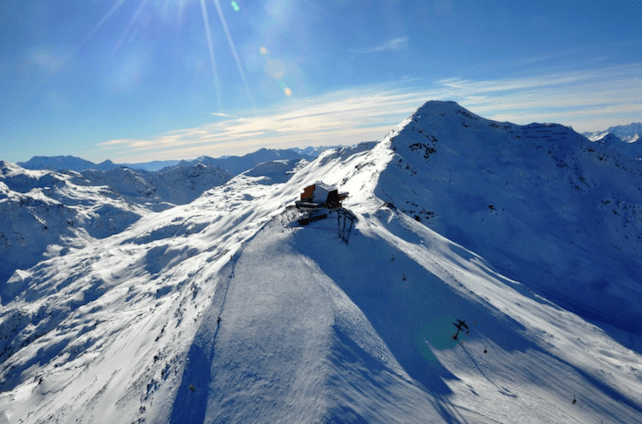
Way to go: ride the eight-person gondola up to Bormio 2000 and then the cable-car to Cima Bianca at 3012m. There’s a choice of easy and intermediate runs both above and below the treeline. All routes bring you back to the outskirts of Bormio itself; but you’d be nuts not to include the Stelvio piste along the way. Normally it’s a red piste: but leads a double life as one of the best downhill race tracks in the World Cup, and has twice hosted the World Championships.
Stay: Via Alu is a rustic apartment house 2km from Bormio and 150m from the nearest bus stop.
9. Saas Fee – top of ski area down to the village
Vertical drop: 1782m
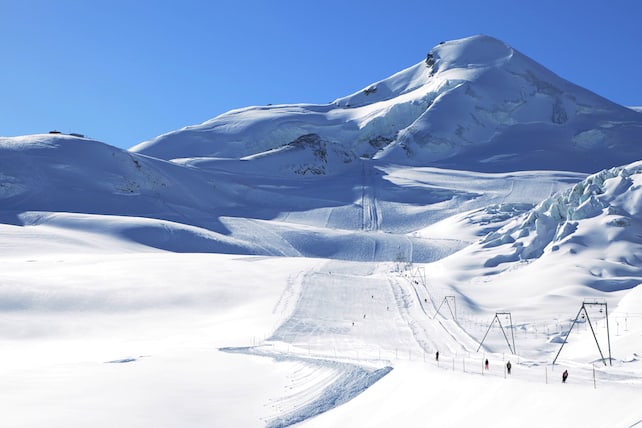
Way to go: it’s a long, long way up through the lift system from the pretty, traffic-free town (only electric taxis allowed) of Saas Fee. The final stage is the Metro Alpin underground railway, which brings you up to 3456m, and the home of Saas-Fee’s summer skiing pistes. From the top, there are two ways down. The best is via Morenia, skier’s right as you look down the mountain. The lower half includes a gorgeous, straight-down-the-mountain fall-line red.
Stay: Sunstar Boutique Hotel Beau-Site is a cosy place to stay, with family rooms and an indoor pool with waterfall.
10. Les Deux Alpes – from the glacier to the village
Vertical drop: 1771m
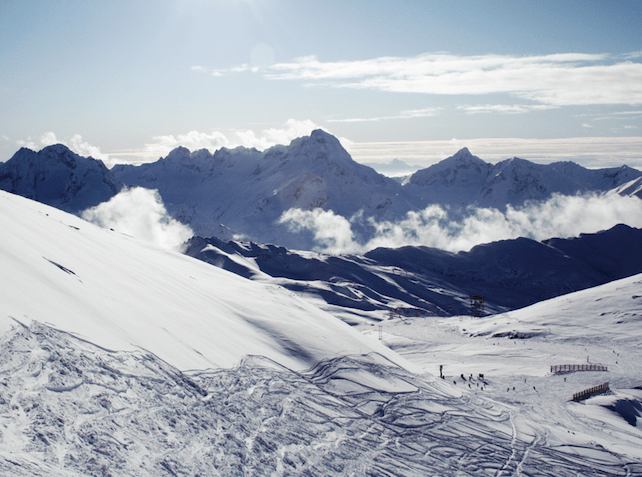
Way to go: The Jandri Express gondola and then a funicular bring you up to the top of the glacier. Then from the top of the short Lauze lift you can ski all the way back down to Les Deux Alpes. The last leg of this run has been dramatically improved this season by the construction of a new blue run into town.
Stay: L’Ours Blanc is a residence that contains 66 apartments, is 50m from the lifts and has an indoor heated pool.










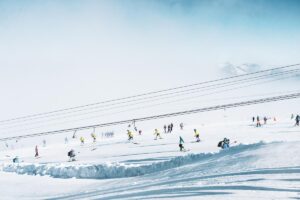
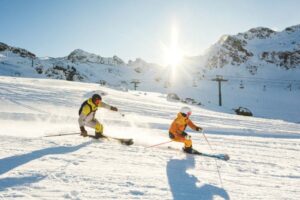

Sorry to burst the bubble, but the run to Valtounenche has a lift you need to take about halfway down. A tiny 150m long chair, but it’s still there. However the Ventina down from Klein Matterhorn to Cervinia itself is uninterrupted. And pretty ace!
Thanks ZermattInsider – you’ll see from the list that the measurement we’ve taken is now just down to Cervinia. It still makes then top ten longest runs!
Actually, once you get to the Klein Matterhorn, you can ski down and then up to Gobba di Rollin
and start your decent there. Gobba di Rollin has a listed elevation of 3899 mt. which would add 16 meters to the length of this vertical run.
Not many North American resorts on the list eh! This is why Europe rocks. Not a valid entry but I recall 2,800m vertical from Monta Rosa to Gressoney without interruption (apart from friends’ expletives!)
Hi Jim, yes that run would have been no. 11 on my list!
Great list but verticals is only, as you mention, one dimension of a ski run. But let’s stick to your idea, how about these giants; Alagna Valsesia 1758 vertical meters, Engelberg 1978 verticals, Mürren (to Lauterbrunnen) 2170, Sölden 1682 or Hintertux 1647 ?
I’ve done 4 of them, 6 more to go 🙂 Les Arcs really makes your legs burn, but it’s worth it (Cervinia left me with 2 pins in my shoulder but I’d happily go back to have another go)
Great list, still have a few to knock off.
Les Deux Alpes should be 2,141m (3421-1280) as you can ski continuously down to the village of Mont de Lans – no need to stop in the resort (although there’s a couple of good pubs on the piste that runs through town if you need to).
When I was a rep there we used to guide guests on the route then take them back to the top and let them ‘race’ it. Best time was under 14 minutes but legend has it one of the ski instructors, a former downhill racer, has managed it in under 9 before the lifts opened for the day.
Technically you can actually go from the top at 3568m (highest piste in france), down to Mont de Lans without taking a lift, so that makes 2288m of fun 😉 And a tie with Alpe d’huez’s n1 drop!